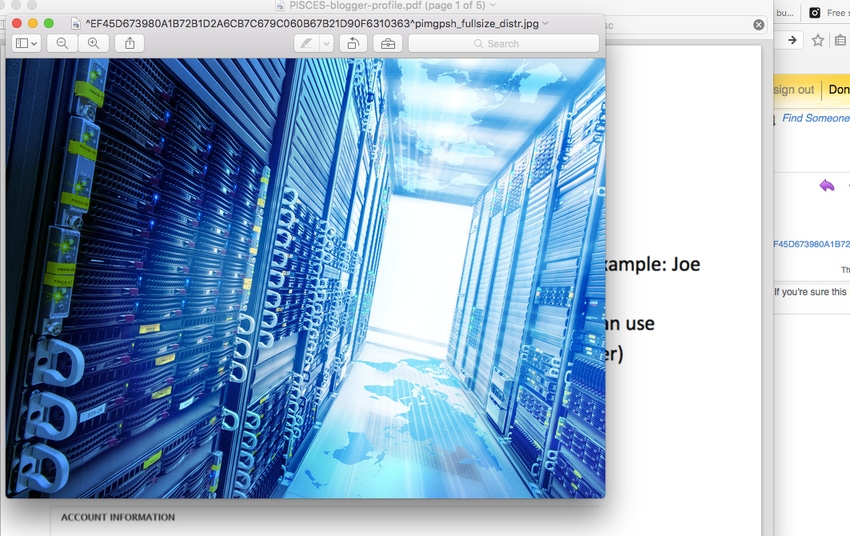MSPs are tasked with keeping everything running. However, we often consider only a small subset of what users actually interact with to be the MSP’s responsibility.
April 27, 2017

Sponsored by Kaseya
 MSPs are tasked with keeping everything running. They have an around-the-clock, constant flow of information, accessible at any time from anywhere. Each and every single business depends in some way shape or form on that network of information flowing. However, we often consider only a small subset of what users actually interact with to be the MSP’s responsibility–for example, desktops, servers, laptops and maybe some simple network monitoring.
MSPs are tasked with keeping everything running. They have an around-the-clock, constant flow of information, accessible at any time from anywhere. Each and every single business depends in some way shape or form on that network of information flowing. However, we often consider only a small subset of what users actually interact with to be the MSP’s responsibility–for example, desktops, servers, laptops and maybe some simple network monitoring.
We need to expand what we consider fundamental to our monitoring responsibilities. Today’s customers are more comfortable than ever with technology. With that comfort, their expectations for availability, performance and quality have grown. Moreover, large telecom providers have made information flow easier, unlimited and available all over with faster speeds than ever before–changing users’ expectations outside of their work lives.
When users arrive in the office, expectations have already been set. Your role as an MSP and manager of that network of information comes front and center. Clients begin to engage with phones over the network, wireless access points, data in the cloud, virtualized applications running in the data center and, of course, hosted email.
Keep in mind, users don’t care if the network itself is up or down; they care about how it is “working for them.” That is what we, as IT, need to think about. We need to move beyond simple “up/down” monitoring and think about the business impact of how the network is operating. Almost 100 percent of an office depends on the basic ability to transfer information from creator to consumer. That transfer happens over the network. Keeping the networking running efficiently is as fundamental as electricity: no electricity, no work, no network, no work. Even slow performance on the networks frustrates our clients. Basic up/down monitoring is table stakes these days. Top-tier MSPs are looking beyond the basics.
High-growth MSPs are seeing that growth through expanded offerings. The driving factor is the need to meet those customer expectations, and increasingly their revenue has made that decision an easy investment. This extends beyond just the basics (such as desktops and server). We need to look at the business as a whole, starting with a deep discovery of what is in a customer’s environment. That discovery must include routers, switches, firewalls, and all the cloud services being used by the business for the business. The next data point for an MSP to understand is the quality, quantity, and usage, of those resources, including CPU, memory and disk space, as well as network bandwidth.
Most offices have a limited amount of bandwidth that is spread among the entire office staff and its many services. One person can inadvertently take up a chunk of that bandwidth without realizing it. Understanding what goes over that network pipe is key to providing quality service. Get familiar with “netflow” and the wealth of information it has to offer. Also keep in mind that many business applications have a front end, middle and back end. Proper monitoring starts with discovering all those parts and then monitoring the network from an end-to-end business perspective.
The complexity and risk in your clients’ business has, for the most part, grown without much understanding. Most of us have a car. Changing the oil and brakes used to be simple–now it’s a task well beyond the basic skills of most car owners. We often hear from our users about “hung computers,” “the phone has jitter,” “my home network is faster,” and the ever-present “this has been going on for a while.”
Your services start with recognizing that business complexity has increased. With that increase comes business risk. Simply providing the basics is not enough. Realizing that your MSP business can grow its revenue by understanding and managing that same complexity and risk is a differentiator.
Critical to that service is training. Many MSPs are simply not comfortable expanding their offerings beyond the simple “is it up or down?” Training your staff will help you open those new revenue streams.
That training is not only for your IT staff but also for your sales and marketing teams. Training involves all aspects of your business, starting with what to include on your website and how your sales team should approach existing customers and bring on new clients. When looking for a way to grow your business, look beyond the tool. One could even argue, start with the training of everything but the tool.
But how do you frame the issue so your clients can recognize it? You need the right “tools” in terms of what to present to the customer–both on your website and in ongoing communication. Being provided with the content and the “know how” to grow your business through network management is where high-growth MSPs are heading.
The key is to work with a vendor that provides you with the entire end-to-end solution: marketing material, sales positioning, and communication templates backed up with top-tier software.
Customer expectations are higher than ever. Only by understanding the complexity in the current modern office will you be able to address these expectations. And only with a provider or vendor that can help with training and tools will you be able to do that. Those vendors will help you invest into additional revenue-generating streams.
Learn more about how you can inform your clients, identify the scope of their business and offer NMaaS here.
Sergio Galindo is a General Manager at Kaseya. He has over 28 years of global, professional management experience, 18 of them in the financial industry. As general manager, Sergio has overall responsibility for Kaseya’s Traverse product line as well as managing Internal IT. Sergio has extensive experience managing large multi-faced global teams, developing business and IT strategies, product development, global application deployment and production. Prior to his appointment as General Manager at Kaseya, Sergio was President and COO at GFI Software with responsibilities including technology, finance, marketing, sales and product development/engineering. Sergio was also CIO, responsible for the GFI’s global IT infrastructure. He has held senior management positions with the Bank of New York, Bankers Trust and Lehman Brothers as Senior Vice President in the Information Technology Division. There he was responsible for implementing global initiatives including standardization of the Windows Desktop and Server infrastructures.
Guest blogs such as this one are published monthly and are part of MSPmentor’s annual platinum sponsorship.
You May Also Like
